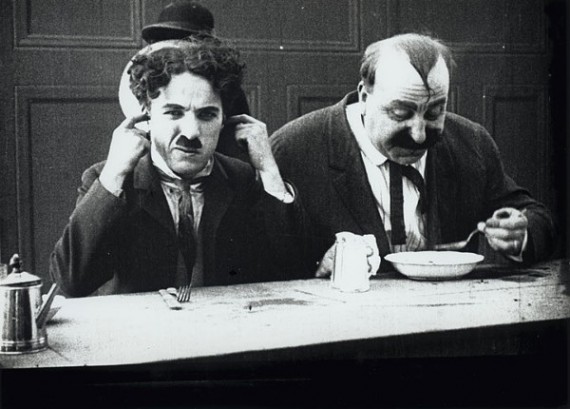Does chewing, nose sniffing, throat clearing, pen clicking, finger tapping propel your mind to instant rage? Misophonia, aka “Sound Rage Disorder,” aka Selective Sound Sensitivity Syndrome (SSSS) is a neurological disorder in which anger, hatred, and disgust are triggered by specific sounds.
When to most people these particular sounds and visuals are barely background noise, to Misophoniacs these sounds and visuals trigger severe and immediate mental agony and set off a physiological urgency for fight or flight.
There is hardly any research on the topic. Its not even clear how common it is. Various research report prevalence of anywhere from 10% to as much as 60% among those who also suffer from tinnitus, or “ringing in the ear.”
What’s becoming more obvious is its coincidence with other anxiety disorders. There are reports that 52.4% of Misohoniacs also meet the criteria for obsessive-compulsive disorder.
Symptoms
- Anger, and even enraged, by common sounds, such as other people clipping their nails, brushing teeth, biting an apple, eating crushed ice, slurping, drinking, walking, chewing gum, laughing, snoring, typing on a keyboard, whistling or coughing; saying certain consonants; or repetitive sounds.
- Some are affected by visuals like repetitive foot or body movements, fidgeting, or movement they observe out of the corners of their eyes; this has been termed misokinesia, meaning hatred of movement.
- Intense anxiety or avoidant behavior may develop, avoidance of socialization.
- Some people feel the compulsion to mimic what they hear or see. Mimicry is an automatic, non-conscious, and social phenomenon. It has a palliative aspect, making the sufferer feel better.
- Hatred is even more severe when the forbidden sound is coming from someone who is emotionally connected to the sufferer, like a family member or close friend.
Neurobiology
Authors of Sound Rage claim “Sound-Rage” disorder is not a result of auditory dysfunction and is not a hearing issue. It differs from all other known disorders in that the autonomic response to perceived threat is anger rather than fear. They explain:
The processing of information takes place at many stops along the route from someone sniffing to a sufferer storming out of the room. In the brain, there are neural pathways taken between different cortical regions where each cortical region may contribute to the evaluation of the stimulus or the evaluation of the necessary response.
The brain regions in which we are most interested are those that are concerned with the circuits that elicit emotions associated with triggers; the sensory systems that provide the input for triggers, auditory, visual and olfactory; and the higher thinking areas of the brain that reinforce the emotions and behaviors.
Two critical cortical areas, the Insular Cortex and the Anterior Cingulate Cortex, are intimately tied to the “Sound-Rage” disorder. Given the mass of evidence that they are both implicated in emotional processing and first-person subjective experience, functional abnormalities of these regions may be involved in the pathophysiology of psychiatric disorders.
Available Therapies
There is currently no cure for misophonia. The following therapies are said to have helped certain patients with their symptoms:
Cognitive behavioral therapy (CBT) is a form of psychotherapy that delves into your personal world on how you think about yourself, other people and all that affects your thoughts and feelings. It then looks for ways to improve your state of mind and response to triggers.
Tinnitus Retraining Therapy (TRT) – a combination of sound therapy and teaching about mechanisms, with directions about how to return to normal life. It is based on the work of Professor Pawel Jastreboff who coined the term misophonia.
Habituation Therapy – advocated by Dr Marsha Johnson this is habituation therapy as developed by Dr Pawel Jastreboff in the 1980s. Sufferers engage the auditory system and lessen the amount of auditory contrast between a quiet background noise floor and the offending trigger sounds. While the use of these devices does not appear to result in long-term recovery or diminution of the 4S symptoms, it eases the severity of the reactions and allows the wearer to enjoy more of daily life.
Hypnosis – Some people have found that psychotherapeutic hypnotherapy has helped them to become calmer and more relaxed and thus better able to deal with their misophonia indirectly.
Colour noise – can be used to mask offending sounds, usually by playback through earphones or headphones. A noise’s “colour” simply refers to the bias it has towards a certain range of frequencies. Although there are a wide range of colors, the ones generally used by people with misophonia to mask trigger sounds are white noise and pink noise. These are available commercially, and by downloading free files from the Internet. It is worth experimenting to see which, if any, work for you.
Abdominal breathing – also known as diaphragmatic or Hara breathing, is a tried and tested technique for ameliorating panic reactions. Practiced for only ten minutes a day, it has associated health benefits, such as increased energy! Breathing from the diaphragm (the muscle between the chest and the stomach) allows more oxygen to enter the body. Be careful not to overdo it (ie too quickly or for too long) as you might end up feeling a little light-headed.
Also, if you are not much into therapists, something to try is FearFighter. Its is a CBT program delivered over the internet by a computer. It helps you identify specific problems, work on realistic treatment goals, and monitor achievement of those goals by repeated self-exposure. The program helps you to work out exactly what brings on your fear, so you can learn how to face it until it subsides. This is called exposure therapy.
Conclusion
Understandably, Misophoniacs suffer a variety of social problems. They have trouble dating, engaging in prolonged conversations, and eating out with friends. An obsessive goal becomes to simply avoid all things with prolonged audio stimulus. Not the best way to live a life, is it?
If you want to read more about available therapies in detail read more on UK’s Misophonia site or check out a book on Amazon:


 Five Things You Must Know About Intermittent Explosive Disorder
Five Things You Must Know About Intermittent Explosive Disorder Ways to Reset Your HPA Axis & Dramatically Improve Emotional Health
Ways to Reset Your HPA Axis & Dramatically Improve Emotional Health Mirror Neurons and Why Anger is so Freakishly Contagious
Mirror Neurons and Why Anger is so Freakishly Contagious